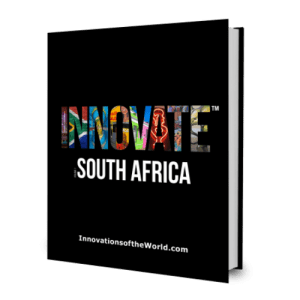Demystifying innovation is trying to break it into what we see are the building blocks of getting from creating ideas to realising the value of innovation. There are three parts to it, and these are not necessarily sequential – ideating and shaping, designing and killing ideas and lastly scaling.
Many organisations place emphasis on ideating and try as much as possible to fix ideating with the perception they’re going to get the value. They in turn spend very little time on shaping, design and killing ideas, as well as scaling. But does ideating alone pull through to make a business difference? Does it add value to solving the perceived and real challenges from businesses? If we look at each stage of innovation individually, we recognize the challenges that lead to organisations getting stuck on ideating. Here, we will focus on ideation and the right way to carry out the process.
Creating the most powerful ideas
When you think about innovation and ideation, the most powerful ideas require combining concepts and combining skills to see their potential impact. However, if you put them together and you tweak them a bit, they can get to something else. For ideation to work better, you usually need to get people and skills that sit in different parts of the organisation to actually work together. Unfortunately, this is not usual and organisations are structured in such a way that unless leadership actually encourages people to get together to innovate, ideation commonly happens within siloes.
Steve Jobs spoke a lot about that, and how he would deliberately design buildings so that people from different parts of the organisation will actually meet at a coffee station to do that. This was to get the combinatorial effect of ideas and skills from people who sit in different parts of the organisation. If not, you are going to have ideas, but lack that added value of combining very different things.
Just a Quick Note:
InnovationsOfTheWorld.com has partnered with Trade License Zone (TLZ) to support global innovators looking to expand internationally. Take advantage of the UAE’s Free Zones—enjoy streamlined setup, low corporate taxes, and a strategic gateway to the Middle East and beyond.
Get Your UAE Free Zone License Fast & Easy!Beyond this, there is merit in investigating company culture, where the people actually have a higher perspective on where the business needs to go in order to see where their part fits into the bigger business picture. This can help overcome silo mentality since silo innovation stems from silo performance and silo delivery.

Some ideas are killed too early
Based on perceptions, history, power battles, or governance – certain ideas are often killed too early. An organisation doesn’t know for sure that those ideas cannot work because they never advance to that stage. Yes, wrong ideas do exist, but some are good ideas that are killed for the wrong reasons. Ideas that are killed, are just based on the context and not so much the idea itself.
Idea antibodies are the usual cause, pushing their own biases of why an idea is to be killed, often stemming from fear of being replaced by a new innovative process, being overtaken by a colleague for promotion, or having the mindset that a similar idea was already tried years ago and never worked. Very often it is the power battles and company politics, that determines the direction. Very good ideas can be killed in the process, not because of the idea, but actually who proposes the idea. That is why sponsorship of good ideas becomes so important.
Killing ideas is necessary, but only once you’ve done enough to disprove it. This typically cannot happen in the first stages of ideation since it would be too early and you might be missing something amazing.
The smart way to kill ideas
It is near impossible to answer every single question at the ideation stage, especially when you are dealing with something new that nobody else has done before. Innovation teams will find themselves jumping through the same hoops, trying to address something that should be bulletproof. At some point, they cannot answer certain questions, and this amazing idea is killed not because it lacks potential, but because it cannot answer to every single question.
Think about an organisation that has plans to manufacture something. They are trying to design a process that has to be 100% risk approved, and that requires a series of steps in compliance and governance without killing the innovative part of it. But not every project can be dealt with in the same way. Dealing with innovation, is different to dealing with a compliance or safety process that typically has been done many times before.
Killing ideas is usually seen in a negative light, instead of being recognised as avoiding problems later. Teams often kill an idea because a hypothesis does not work and those teams are then seen as failures and ultimately leave, even though they did the right thing and saved the organisation from wasting resources. The key to killing ideas properly is to focus on the future, instead of what has been done and invested so far. Rather let go of an idea if it proves that in the future it will not work, than hold on because a lot of time and resources have been spent on it. Lastly, organisations should learn to reward teams that kill ideas early enough and do it properly.
Ultimately ideation is important. If you don’t have ideas, you cannot do anything, and if you don’t actually make it real, you also don’t get the value.
Accenture is a global professional services company with leading capabilities in digital, cloud and security. Combining unmatched experience and specialized skills across more than 40 industries, we offer Strategy and Consulting, Interactive, Technology and Operations services—all powered by the world’s largest network of Advanced Technology and Intelligent Operations centers. Our 674,000 people deliver on the promise of technology and human ingenuity every day, serving clients in more than 120 countries. We embrace the power of change to create value and shared success for our clients, people, shareholders, partners, and communities. Visit us at www.accenture.com.
















